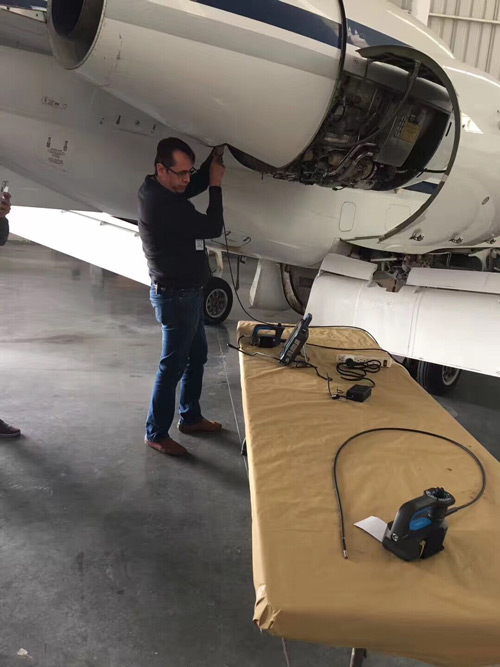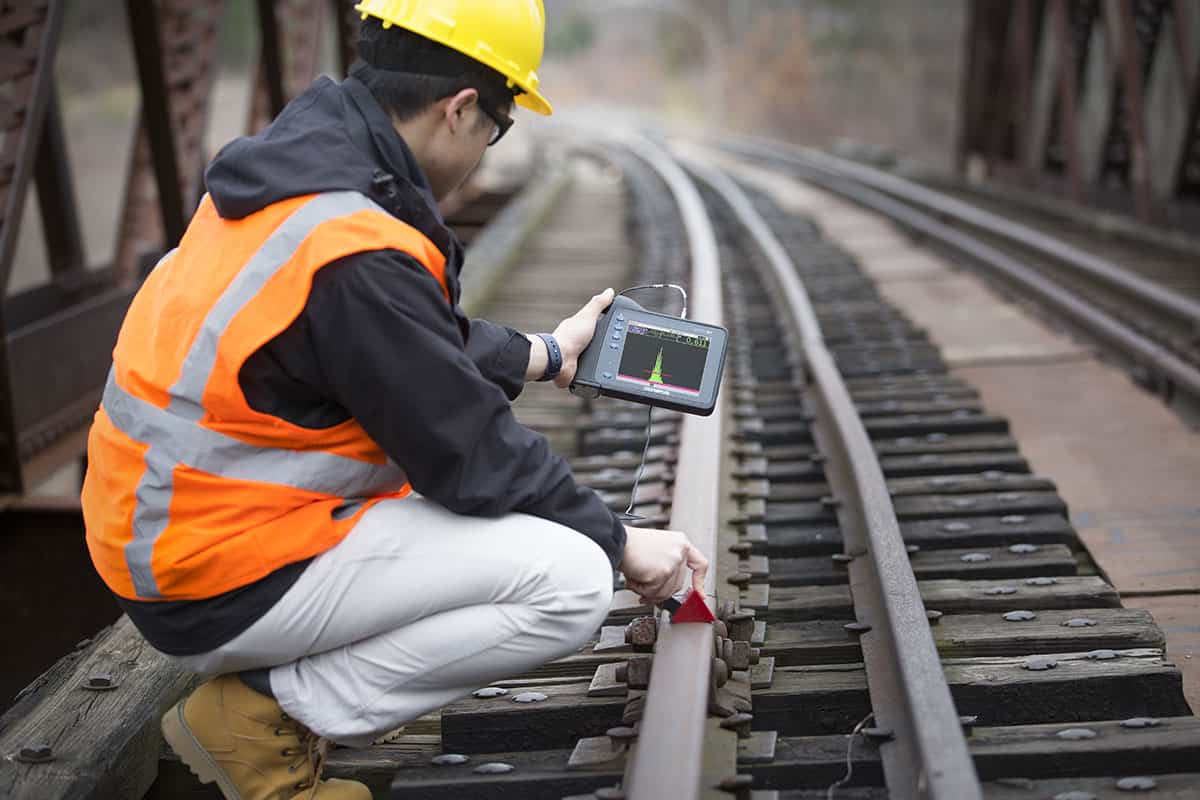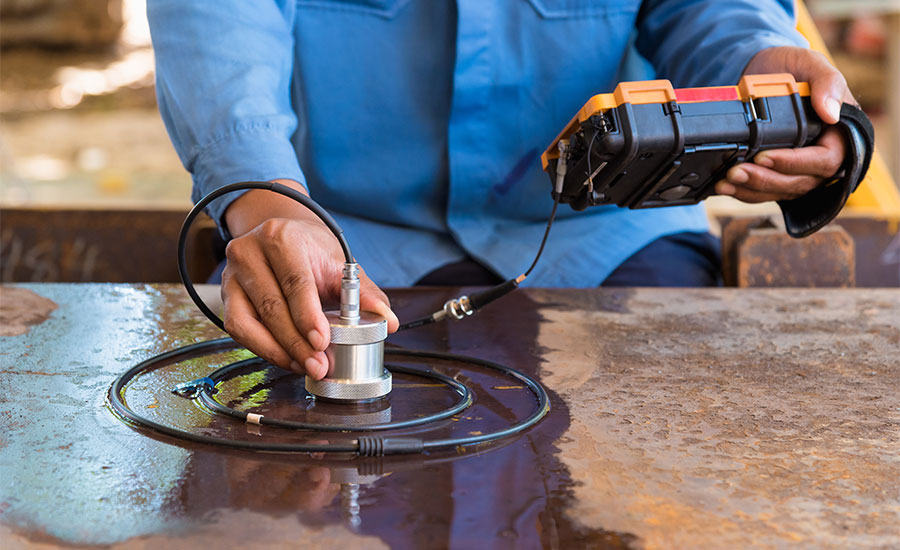Overview of non-destructive testing
NDT (Non-destructive testing) is the use of sound, light, magnetic and electrical properties, without compromising or affecting the performance of the object under test, to detect whether there is a defect or non-uniformity, the size, location, nature and quantity of the defects are given, and then the technical state (such as qualified or not, remaining life) of the inspected object is determined. Personnel engaged in non-destructive testing need to receive professional training, to obtain qualifications to be certified. Every country, region, and institution have different requirements for NDT training qualification certification. Before training, we should know clearly, select appropriate standards and institutions for relevant training and assessment.
What is non-destructive testing?
Non-destructive testing (NDT) is an indispensable and effective tool for industrial development, which reflects the industrial development level of a country to some extent, and its importance has been recognized. In November 1978, China established a national non-destructive testing academic organization-the mechanical engineering. In addition, metallurgical, electric power, petrochemical, shipping, aerospace, nuclear and other industries have also established their own non-destructive Testing Society or Association; Some provinces, autonomous regions, municipalities directly under the central government and prefectural-level cities have set up provincial (municipal) and prefectural-and municipal-level non-destructive testing societies or associations.
At present, non-destructive testing courses are offered by the Dalian University of Science, Xi’an Polytechnic University and Nanchang Hangkong University. There is still a big gap between China and the advanced countries in the field of NDT, especially in the field of high-tech ndt equipment such as infrared and acoustic emission.
Common non-destructive testing methods
Radiographic examination (RT) , ultrasonic examination (UT) , magnetic particle examination (MT) and liquid penetrant examination (PT) . Other nondestructive testing methods: Eddy current testing (ET), acoustic emission testing (AT), thermal image / infrared (Tir), leakage testing (Lt), AC field measurement (ACFT), magnetic flux leakage testing (MFL FMT), far-field testing (RFT), etc…
Application characteristics of non-destructive testing
1. The biggest characteristic of nondestructive testing without damaging material and structure is testing without damaging material and structure, so the rate of product inspection can reach 100 %. However, not all items and indexes need to be tested can be nondestructive testing, NDT technology also has its own limitations. Some tests can only use destructive tests, therefore, non-destructive testing cannot replace destructive testing at present. That is to say, to evaluate a workpiece, material, machine, and equipment, we must compare and match the results of Ndt with those of destructive test in order to make an accurate evaluation.
2. The time of NDT must be selected according to the purpose of Ndt when ndt is performed.
3. In order to improve the reliability of the test results, it is necessary to select the most appropriate ndt method according to the material of the equipment, the manufacturing method, the working medium, the service condition, and the failure mode Predict the types, shapes, locations, and orientations of defects that may occur, and select suitable nondestructive testing methods.
4. Comprehensive application of non-destructive testing methods any one of the non-destructive testing methods are not universal, each method has its own advantages and disadvantages. In order to ensure the safe operation of pressure equipment, several testing methods should be used as much as possible. Besides, in the application of NDT, it should be fully realized that the purpose of ndt is not to pursue “high quality”, but to consider the economy of NDT under the premise of fully guaranteeing the safety and appropriate risk rate. Only in this way, the application of non-destructive testing in pressure equipment can achieve the desired goal.
Common non-destructive testing methods
There are many non-destructive testing methods, according to the National Aeronautics and Space Administration, which can be divided into six categories about 70 kinds. However, in practical applications, there are five common, which is what we call the conventional nondestructive testing methods:
Conventional non-destructive testing methods
Visual Testing; Visual Testing;
Ultrasonic Testing (UT) ;
Radiographic Testing (RT) ;
Magnetic Particle Testing; Magnetic particle Testing;
Penetration Testing;
Eddy Current Testing (ET) ;
Acoustic emission.
1. Visual Inspection (VT) is one of the most important methods in the first stage of non-destructive testing (NDT). According to international practice, a visual inspection should be done first to make sure it will not affect the later inspection, and then do the four major routine inspections. For example, Bindt PCN certification, there are special VT1,2,3 levels of assessment, more special certification requirements. After International Training, the VT testing technology will be more professional, and very much by the international institutions.
Vt Is often used for visual inspection of welds. The welds themselves have process assessment criteria. They can be inspected by visual inspection and direct measurement of the dimensions. If they are found to be defective in appearance, such as undercut, they must be polished or trimmed first Before doing any more in-depth instrumentation. For example, welding surface and casting surface more VT to do more, and forging is very few, and its inspection standards are basically consistent.
Ultrasonic Detection (UT)
(1) DEFINITION OF ULTRASONIC TESTING: the Study of reflected, transmitted and scattered waves by the interaction of ultrasonic waves with a specimen The technique of macroscopical defect monitoring, geometry characteristic measurement, organization structure, and Mechanical Property Change Detection and characterization, and then evaluate its specific application.
(2) the principle of the ultrasonic wave: mainly based on the propagation characteristics of the ultrasonic wave in the specimen.
A. The sound source produces an ultrasonic wave, and the ultrasonic wave enters the specimen in a certain way
B. The ultrasonic wave propagates in the specimen and interacts with the material and the defects in the specimen to change the propagation direction or characteristics
C. The changed ultrasonic wave is received by the testing equipment and can be processed and analyzed
D. Based on the characteristics of the received ultrasonic wave, the defects and characteristics of the specimen and its interior are evaluated.
(3) ADVANTAGES OF ULTRASONIC TESTING:
A. It is suitable for non-destructive testing of metal, non-metal and composite materials
B. It has strong penetration ability and can be used to detect the inner defects of the specimen in a large thickness range. For metal materials, thin-walled tubes and plates of 1 ~ 2 mm thickness can be detected, as well as steel forgings of several meters in length
C. The defect location is more accurate;
D. The detection rate of area-type defects was higher. High sensitivity, can detect the small size of the internal defects of the test piece;
F. The detection cost is low, the speed is fast, the equipment is light, is harmless to the human body and the environment, the spot use is more convenient.
(4) LIMITATIONS OF ULTRASONIC TESTING:
A. The accurate qualitative and quantitative analysis of the defects in the specimens still needs to be further studied
B. It is difficult to detect the specimen with complex or irregular shape by ultrasonic
C. The position, orientation, and shape of the defect have some influence on the detection result
D. Material Quality and grain size have a great influence on the detection
E. The results of the commonly used manual a-type pulse reflection method are not intuitionistic, and there is no direct record of the test results.
(5) SCOPE OF APPLICATION OF ULTRASONIC TESTING:
A. From the material of the test object, it can be used for metal, non-metal and composite material;
B. It can be used for forging, casting, welding, cementing and so on
C. From the shape of the test object, it can be used for plate, Bar, pipe, etc.
D. From the size of the test object, the thickness can be as small as 1mm, can be as large as a few meters;
E. From the point of view of the defect, it can be either surface defects or internal defects.
3. Radiographic (RT) is a non-destructive testing (NDT) method which uses x-ray or x-ray to penetrate the specimen and records the information on the film.
(1) principle of radiographic examination: The film is sensitive to radiation which penetrates an impermeable substance to the naked eye, and when the film is irradiated by x-rays or r-rays, the latent image of silver halide in the emulsion layer of the film is produced as well as ordinary light Because of the difference of the Absorption Coefficient of the different density material, the energy of the radiation to the film will be different, and the defects can be judged according to the different blackness of the film after darkroom treatment.
(2) characteristics of radiography: the advantages and disadvantages of radiography are summarized as follows:
A. The visual image of the defect can be obtained, which is accurate in qualitative and quantitative in length and width
B. The test result has the direct record, may the long-term preservation;
C. The detection rate of volume type defects (porosity, slag inclusion, Tungsten inclusion, burn-through, undercut, welding lump, pit, etc.) is very high, while the area type defects (incomplete penetration, incomplete fusion, crack, etc.) are easy to be missed if the camera angle is not appropriate;
D. It is suitable to inspect the workpieces with thinner thickness rather than thicker workpieces, because high energy x-ray equipment is needed to inspect the workpieces with thicker workpieces, and its sensitivity will decrease with the increase of the thickness
E. Suitable for inspection of Butt welds, not suitable for inspection of Fillet welds, plates, bars, forgings, etc.
F. It is difficult to determine the position and dimension (height) of the defect in the thickness direction of the workpiece
G. Detection cost is high, speed is slow;
H. Have radiation biological effect, can kill biological cells, damage biological tissue, endanger the normal function of biological organs.
In general, RT features more accurate characterization, long-term preservation of visual images, a relatively high overall cost, and radiation is harmful to the human body, the test speed will be slower.
Non-destructive testing x-ray machine
Industrial Inspection x-ray machines for the industrial sector are usually industrial non-destructive inspection x-ray machines (NDT), such portable x-ray machines can detect various industrial components, electronic component, internal circuits. For example, the socket plug rubber internal wiring connection, diode internal welding and so on the detection. Bji-xz, BJI-UC industrial inspection x-ray machine is a kind of x-ray machine which can be connected with the computer for image processing.
4. Magnetic Particle Inspection (MT)
(1) . The principle of magnetic particle detection: After the ferromagnetic material and the workpiece is magnetized, because of the discontinuity existence, causes the workpiece surface and the near-surface magnetic force line to have the local distortion and produces the leakage magnetic field, the adsorption applies in the workpiece surface the magnetic particle, to form a magnetic scar that is visible to the eye in the right light, thus revealing
The position, shape, and size of a discontinuity.
(2) . Applicability and LIMITATIONS OF MAGNETIC PARTICLE TESTING:
A. Magnetic particle flaw detection is used to detect the small size and narrow gap on the surface and near the surface of ferromagnetic materials, such as cracks with a length of 0.1 mm and width of Micron.
B. Magnetic particle testing can be used to test raw materials, semi-finished products, finished products and parts in service. It can also be used to test plate, profile, pipe, bar, welding, casting and forging.
C. Cracks, inclusions, hairlines, white spots, folds, cold separations, and porosity can be found.
D. Magnetic particle testing cannot detect Austenitic stainless steel materials and Austenitic stainless steel welds, nor can it detect non-magnetic materials such as copper, aluminum, magnesium, and titanium. It is difficult to find the superficial scratches, the deeply buried holes, and the lamination and folding with the angle less than 20.
5. Penetration testing (PT)
(1) . The basic principle of liquid penetrant detection: the surface of the part is coated with penetrant containing fluorescent dye or coloring dye, under the Capillary action, after a period of time, the penetrant can penetrate into the surface open defects; After removing the excessive penetrant on the surface of the part, the surface of the part is coated with an imaging agent. Similarly, under the action of a capillary, the imaging agent attracts the penetrant retained in the defect and the penetrant penetrates back into the imaging agent Under a certain light source (ultraviolet light or white light), the trace of the permeate at the defect is realized (yellow-green fluorescence or bright red), thus the shape and distribution of the defect can be detected.
(2) . ADVANTAGES OF PENETRATION TESTING:
A. Can detect all kinds of materials, metal, non-metal materials, magnetic, non-magnetic materials, welding, forging, rolling and other processing methods;
B. High sensitivity (defect 0.1 m wide can be found)
C. Intuitive display, easy operation, low detection cost.
(3) . DISADVANTAGES AND LIMITATIONS OF PENETRATION TESTING:
A. It can only detect the defects of the surface opening;
B. It is not suitable for checking workpieces made of porous loose material and workpieces with a rough surface
C. Penetration testing can only detect the surface distribution of defects, and it is difficult to determine the actual depth of defects, so it is difficult to make a quantitative evaluation of defects. The result of detection is also influenced by the operator.
6. Eddy current testing (ET)
(1) . The basic principle of Eddy current testing: The coil with alternating current is placed on the metal plate to be tested or sheathed outside the metal tube to be tested (see FIG.). At this point in the coil and its vicinity will produce an alternating magnetic field, so that the sample has a vortex-shaped induction alternating current, known as Eddy Current. The distribution and size of the Eddy current are related to the shape and size of the coil, the size, and frequency of the alternating current, etc. It also depends on the conductivity, magnetic permeability, shape and size of the specimen, the distance from the coil and the surface crack defect. Therefore, the size and phase of the Eddy current in the specimen can be inferred by measuring the change of the magnetic field caused by the eddy current with a detecting coil under the condition that other factors remain relatively constant The information of conductivity, defect, material condition and other physical parameters (such as shape, size, etc.) are obtained. However, because Eddy current is alternating current and has skin effect, the detected information can only reflect the surface or near the surface of the specimen.
(2) . Application: According to the shape of the test piece and the purpose of detection, different types of coils can be used, usually there are three types: through-type, probe-type, and insert-type coils. The through-type coil is used to detect pipes, bars, and wires. Its inner diameter is slightly larger than that of the tested object. The probe coil is suitable for local detection of the specimen. When applied, the coil is placed on a metal plate, tube or another part to check for fatigue cracks on the inner cylinder of the Landing Bar and the turbine engine blades. Plug-in coil also is known as the internal probe, placed in the pipe or parts of the hole used for the inner wall detection, can be used to check the corrosion of the inner wall of various pipes and so on. In order to improve the detection sensitivity, probe-type and plug-in coils are mostly equipped with magnetic cores. Eddy current method is mainly used for the quick inspection of Metal Tube, bar and line on the production line and the inspection of large quantities of parts such as bearing steel ball, valve, etc.



